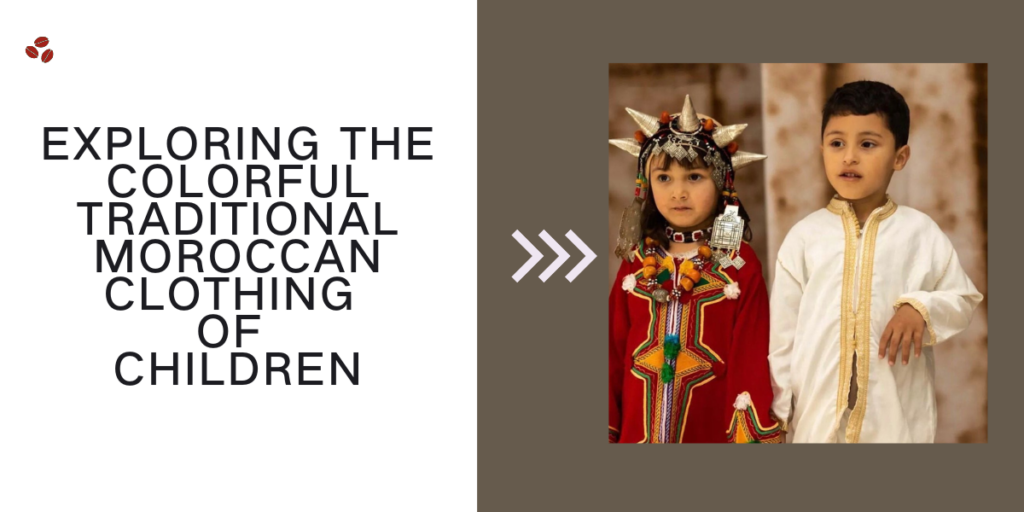Moroccan traditional clothing is known for its vibrant colors, intricate designs, and unique styles. It is a blend of various cultural and historical influences, including Arab, Berber, and Andalusian. The traditional clothing of Morocco varies by region, with each region having its distinct style and design. Traditional clothing plays a significant role in Moroccan society, reflecting the country’s rich history and diverse influences. In this article, we will explore the colorful traditional clothing of Moroccan children, including its history, symbolism, and significance in Moroccan culture.
History Of Moroccan Traditional Clothing
The history of Moroccan traditional clothing can be traced back to the Berber tribes that inhabited the region before the arrival of Islam in the 7th century. Berber clothing was simple and functional, designed to protect the wearer from the harsh desert environment.
With the spread of Islam in Morocco, traditional clothing evolved to reflect the Islamic dress code. The djellaba, a long robe with a pointed hood, became the most common garment for both men and women. The caftan, a long dress with long sleeves, was also introduced during this period.
Moroccan traditional clothing was further influenced by the arrival of Arab and Andalusian migrants during the 8th century. Arab clothing introduced new fabrics, such as silk and cotton, and intricate embroidery and designs. Andalusian clothing brought in more vibrant colors and patterns.
Throughout Morocco’s history, the significance of colors and patterns in traditional clothing has been paramount. Certain colors and patterns hold specific cultural and religious meanings, and the choice of clothing for special occasions is carefully considered.
Today, Moroccan traditional clothing is a blend of all these influences, with a wide range of styles and designs. While Western fashion has had an impact on traditional clothing, many Moroccans still value their cultural heritage and continue to wear traditional clothing for special occasions.
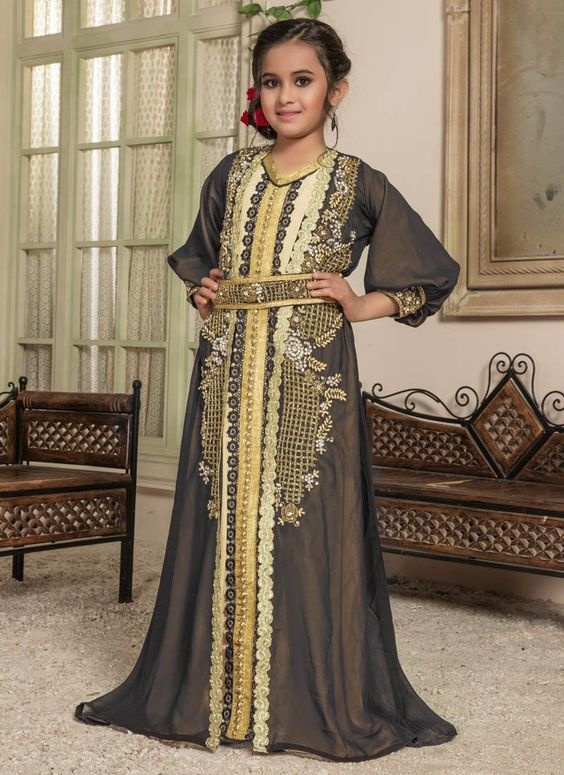
Traditional Clothing For Moroccan Children
Traditional clothing is an essential part of Moroccan culture, and this includes clothing for children. Traditional clothing for children is designed to be comfortable, practical, and reflective of the country’s cultural heritage.
For boys, the most common traditional garment is the Moroccan djellaba, a long, loose-fitting robe with a pointed hood. Djellabas are made from a variety of materials, including wool, cotton, and silk, and are often decorated with intricate embroidery or patterns. Another popular garment for boys is the gandora, a shorter version of the djellaba that is often worn with trousers.
For girls, the most common traditional garment is the Moroccan kaftan, a long, flowing dress with long sleeves. Kaftans can be made from a variety of materials, including silk, cotton, and brocade, and are often embellished with intricate beading or embroidery. Another popular garment for girls is the takchita, a two-piece outfit consisting of a dress and a matching jacket.
Materials used in making traditional clothing for Moroccan children can vary depending on the garment and its intended use. For example, wool is commonly used for djellabas and gandoras, as it provides warmth in colder weather. Cotton and silk are popular materials for kaftans and takchitas, as they are lightweight and breathable, making them ideal for warmer weather.
Accessories and adornments are an integral part of traditional Moroccan clothing for children. Boys often wear a traditional headscarf, known as a chechia, which is made from wool and shaped like a fez. Girls often wear a headscarf, known as a hijab, which is worn to cover the hair and neck.
Other accessories for children’s traditional clothing include belts, which are often embroidered or decorated with metal studs, and traditional leather slippers, known as babouches. Jewelry is also an important part of traditional Moroccan clothing, with gold and silver necklaces, bracelets, and earrings often worn to complement the outfit.
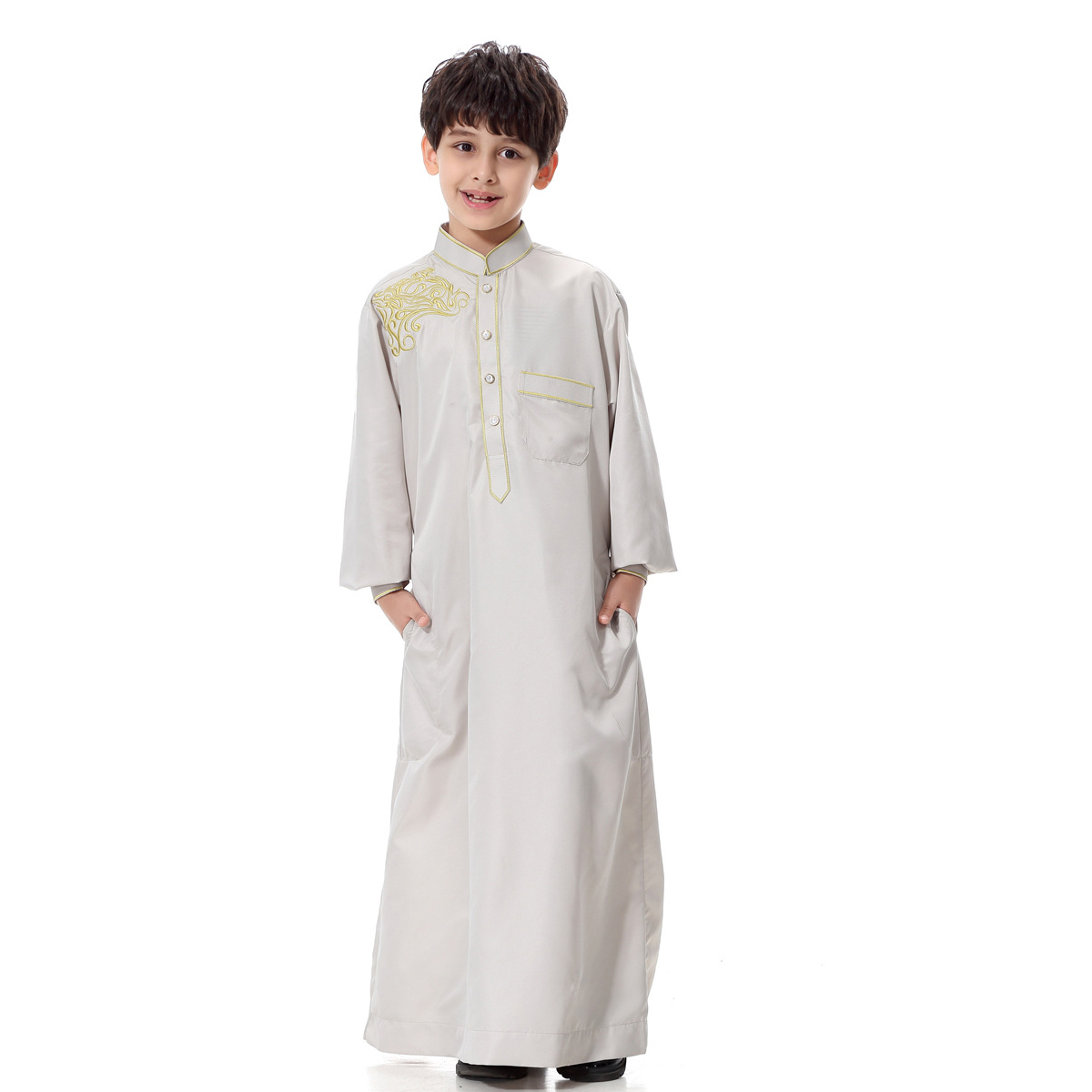
Symbolism In Moroccan Traditional Clothing
Moroccan traditional clothing is rich with symbolism, with colors and patterns often carrying deep meaning and significance. Understanding the symbolism of traditional clothing can provide valuable insights into Moroccan culture and traditions.
Colors play an important role in Moroccan traditional clothing, with each color having its own significance. For example, white is often associated with purity and innocence, while green represents fertility and prosperity. Blue is often associated with protection and spirituality, and red is seen as a symbol of strength and power. Gold is also a popular color in traditional Moroccan clothing, symbolizing wealth and luxury.
Patterns also play a significant role in traditional Moroccan clothing, with each pattern having its own unique significance. For example, the diamond-shaped pattern, known as the lozenge, is often seen as a symbol of protection and warding off evil. The zigzag pattern, known as the sawtooth, is often used to represent the teeth of a serpent and is seen as a symbol of protection against snakes.
Traditional Moroccan clothing is also an important part of celebrations and ceremonies, with specific garments often worn for these occasions. For example, the wedding takchita is a heavily embellished two-piece garment, often made from silk or brocade, and is worn by the bride on her wedding day. The jabadour is a traditional garment worn by men during religious festivals and ceremonies.
The importance of traditional clothing in Moroccan celebrations and ceremonies goes beyond just aesthetics, with garments often carrying deep cultural and symbolic significance. For example, the hennaya, a traditional pattern often seen in wedding takchitas, is believed to protect the bride from the evil eye.
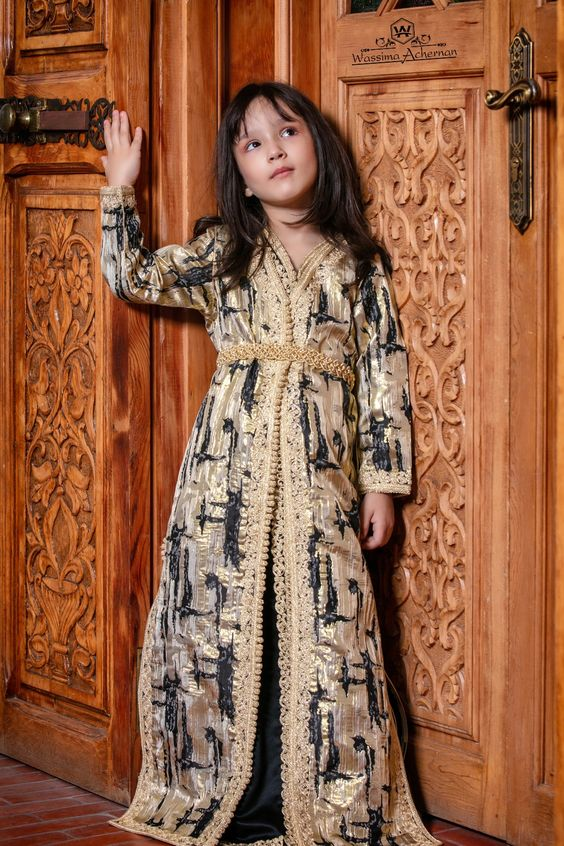
Modernization Of Moroccan Traditional Clothing
Over the years, Moroccan traditional clothing has undergone significant changes and adaptations, influenced by modernization and Western fashion. While traditional garments still hold cultural and symbolic significance, there has been a shift towards more contemporary styles and materials.
One of the changes in traditional clothing styles has been the use of new materials and fabrics. For example, many modern kaftans are made from lighter fabrics like chiffon or satin, as opposed to traditional materials like wool or cotton. Additionally, contemporary designs often incorporate elements of Western fashion, such as shorter hemlines and more fitted silhouettes.
The impact of Western fashion on traditional Moroccan clothing has been significant, with many designers incorporating elements of Western fashion into traditional garments. For example, some designers have created fusion designs that blend traditional Moroccan garments with Western fashion, resulting in unique and modern styles.
Despite the changes and adaptations, there is still a strong effort to preserve traditional Moroccan clothing. Many organizations and initiatives have been established to promote the preservation of traditional crafts and textiles. Additionally, many designers continue to create traditional garments using traditional techniques and materials, ensuring that the craft is passed down to future generations.
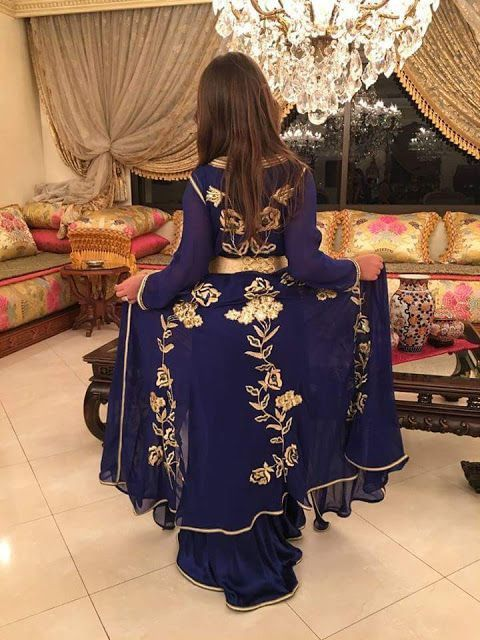
Conclusion
In conclusion, traditional kids clothing also plays a vital role in Moroccan culture, and it is an essential aspect of the country’s heritage. The colorful and intricate designs of traditional clothing are a reflection of Morocco’s diverse history and culture. It is important to appreciate and preserve Moroccan traditional clothing for future generations to come.
If you are interested in learning more about Moroccan traditional clothing, we encourage you to visit Morocco and explore the markets and souks, where you can find an array of traditional clothing and accessories. By supporting the artisans who create these beautiful pieces, we can help preserve this important aspect of Moroccan culture for years to come.
FAQs
Q1: What is the significance of traditional clothing in Moroccan culture?
Traditional clothing holds significant cultural and symbolic value in Moroccan culture. It serves as a means of self-expression, cultural identity, and celebration of heritage. It is also worn during special occasions, such as weddings and religious ceremonies, and represents an important aspect of Moroccan hospitality and respect for guests. The intricate designs, colors, and patterns of traditional garments are also reflective of the country’s rich history and diverse cultural influences.
Q2: What are the different types of traditional clothing for Moroccan children?
There are several types of traditional clothing for Moroccan children, with different styles and designs for boys and girls. For boys, the traditional djellaba is a long, loose-fitting robe with a pointed hood, typically made from wool or cotton. Girls often wear kaftans, which are long, flowing dresses with intricate embroidery and beading. Other traditional clothing for girls includes the takchita, a two-piece garment consisting of a dress and a jacket, and the jabadour, a long-sleeved shirt worn with pants or a skirt. Accessories such as belts, scarves, and jewelry are also an important part of traditional Moroccan children’s clothing.
Q3: How has traditional Moroccan children’s clothing evolved over time?
Traditional Moroccan children’s clothing has evolved over time in response to changing fashion trends and cultural influences. While the basic styles and designs have remained similar, changes have been made to the materials used, colors, and embellishments. The use of lighter fabrics, vibrant colors, and intricate designs are now common, reflecting the influence of modernization and Western fashion on traditional clothing. Despite these changes, the cultural and symbolic significance of traditional children’s clothing remains deeply rooted in Moroccan culture.
Q4: How can travelers learn more about traditional Moroccan clothing?
Travelers can learn more about traditional Moroccan clothing by visiting museums, attending cultural events and festivals, and exploring the local markets or souks where traditional garments are sold. They can also take part in workshops and classes offered by local artisans and designers, where they can learn about the traditional techniques and materials used in making traditional garments. Additionally, travelers can hire local guides who can provide insight and information about the cultural significance and history of traditional Moroccan clothing.
